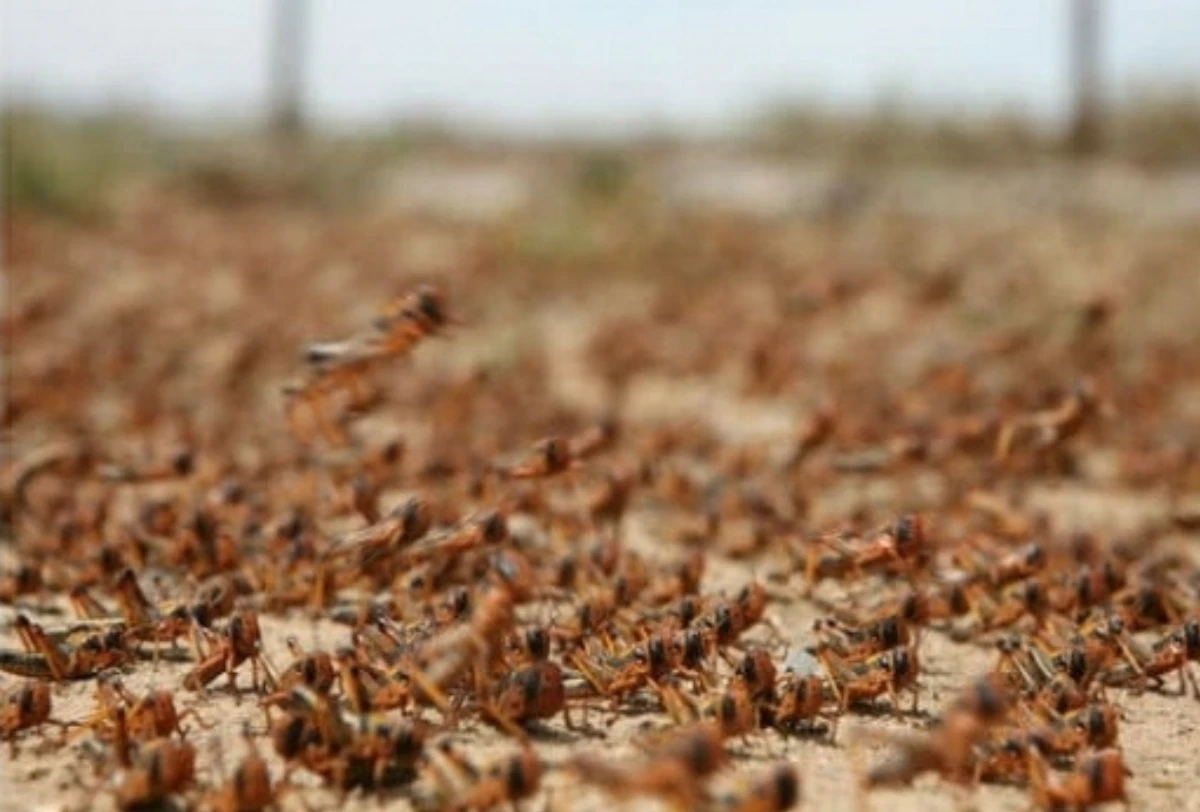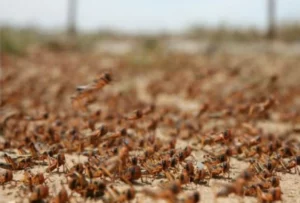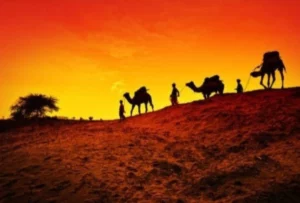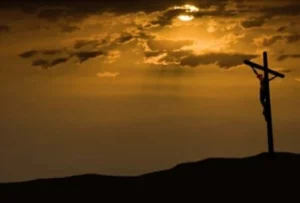The Ten Plagues of Egypt: God’s Power Over Pharaoh
Jump To:
The Ten Plagues of Egypt: The 10 Plagues of Egypt, as recorded in the Book of Exodus, are some of the most dramatic and awe-inspiring events in the Bible. These plagues were acts of divine judgment sent by God to demonstrate His power and authority over Pharaoh, the ruler of Egypt, who had enslaved the Israelites.
Through these plagues, God challenged the might of Egypt’s gods and showed that He alone is the true and living God. This story is not just about deliverance, but about God’s justice, mercy, and ultimate plan for His people.
The Oppression of the Israelites
Before the plagues began, the Israelites had been living in Egypt for over 400 years. What had started as a refuge for Jacob’s family during a famine (thanks to Joseph’s rise to power) turned into generations of slavery. As the Israelite population grew, the Egyptians felt threatened by their increasing numbers and subjected them to harsh labor, forcing them to build cities and work in the fields under brutal conditions (Exodus 1:8-14, KJV).
Pharaoh, seeing the Israelites as a threat, issued a decree that all male Hebrew babies be killed at birth. However, one child, Moses, was miraculously saved. He was found by Pharaoh’s daughter and raised in the Egyptian palace. Years later, Moses fled Egypt after killing an Egyptian who was abusing a Hebrew slave. While in exile, Moses encountered God in the form of a burning bush, where God called him to return to Egypt and lead the Israelites out of bondage (Exodus 3:2-10, KJV).
Moses and his brother Aaron went to Pharaoh with a message from God: “Let my people go, that they may hold a feast unto me in the wilderness” (Exodus 5:1, KJV). But Pharaoh’s heart was hardened, and he refused to release the Israelites. It was then that God began to unleash the Ten Plagues upon Egypt, each one a direct challenge to Pharaoh’s power and the gods of Egypt.
The Ten Plagues of Egypt
1. The Plague of Blood
The first plague began when Moses and Aaron, following God’s command, struck the Nile River with Aaron’s staff, turning the waters into blood. All the fish in the river died, and the water became undrinkable. This plague lasted for seven days, causing the Egyptians great distress (Exodus 7:14-25, KJV). The Nile was considered sacred by the Egyptians, as it was their primary source of life and sustenance. By turning it into blood, God demonstrated His authority over Egypt’s most precious resource and over the gods associated with the Nile.
Despite the severity of this plague, Pharaoh’s heart remained hardened, and he refused to let the Israelites go.
2. The Plague of Frogs
Next, God sent a plague of frogs that swarmed out of the Nile and covered the land of Egypt. Frogs were everywhere—in people’s houses, in their beds, and even in their food. The Egyptians worshipped the frog-headed goddess Heket, the goddess of fertility, but their sacred animal became a source of torment (Exodus 8:1-15, KJV). Pharaoh begged Moses to pray for the frogs to be removed, and Moses agreed, but once the frogs were gone, Pharaoh again hardened his heart and refused to release the Israelites.
3. The Plague of Lice (or Gnats)
For the third plague, God instructed Moses to strike the dust of the ground, and it became lice (or gnats) that infested both people and animals. The entire land was covered with these tiny, biting insects, causing great discomfort (Exodus 8:16-19, KJV). The magicians of Egypt, who had been able to replicate the earlier plagues to some extent, admitted that this plague was “the finger of God” (Exodus 8:19, KJV). Still, Pharaoh’s heart remained unmoved.
4. The Plague of Flies
The fourth plague brought swarms of flies that filled the houses of the Egyptians and covered the ground. This plague, like the others, did not affect the land of Goshen, where the Israelites lived, showing God’s ability to protect His people (Exodus 8:20-32, KJV). Pharaoh initially agreed to let the Israelites go worship in the wilderness, but once the flies were gone, he changed his mind and hardened his heart again.
5. The Plague on Livestock
In the fifth plague, God struck the livestock of Egypt with a severe disease, killing horses, donkeys, camels, cattle, sheep, and goats. This plague was devastating to Egypt’s economy and their ability to work the land (Exodus 9:1-7, KJV). However, once again, the Israelites’ livestock remained unharmed, demonstrating God’s power to make a distinction between His people and the Egyptians. Despite this, Pharaoh’s heart remained hardened, and he refused to let the Israelites go.
6. The Plague of Boils
The sixth plague came without warning. Moses and Aaron took handfuls of soot from a furnace and threw it into the air, causing painful boils to break out on the skin of the Egyptians and their animals. Even the magicians, who had once tried to replicate God’s miracles, were unable to stand before Moses because of the severity of the boils (Exodus 9:8-12, KJV). Yet, Pharaoh’s stubbornness persisted.
7. The Plague of Hail
In the seventh plague, God sent a hailstorm like no other in Egypt’s history. Hail and fire rained down from the sky, destroying crops, animals, and people who were outside. Only the land of Goshen was spared from this deadly storm (Exodus 9:13-35, KJV). Pharaoh admitted his sin and asked Moses to pray for the storm to stop, but once the hail ceased, Pharaoh once again hardened his heart.
8. The Plague of Locusts
Following the hail, God sent a plague of locusts that devoured whatever crops remained. The locusts covered the land so completely that nothing green was left in Egypt (Exodus 10:1-20, KJV). Pharaoh’s officials urged him to release the Israelites, recognizing the devastation the plagues were bringing upon Egypt. But even after promising to let the Israelites go, Pharaoh again changed his mind once the locusts were gone.
9. The Plague of Darkness
The ninth plague brought thick darkness over the land of Egypt for three days. It was a darkness so intense that the Egyptians could not see each other or move about (Exodus 10:21-29, KJV). However, the Israelites had light where they lived. Darkness was a direct challenge to Ra, the sun god, whom the Egyptians worshipped as one of their most powerful deities. Pharaoh, undeterred by even this divine intervention, refused to release the Israelites.
10. The Plague of the Death of the Firstborn
The tenth and final plague was the most devastating. God declared that He would send the angel of death to strike down every firstborn in Egypt—from the firstborn of Pharaoh to the firstborn of the cattle (Exodus 11:4-6, KJV). To protect the Israelites, God instructed them to sacrifice a lamb and place its blood on the doorposts of their homes. When the angel of death saw the blood, he would “pass over” those homes, sparing the lives of the Israelites. This event became the basis for the Jewish celebration of Passover (Exodus 12:12-13, KJV).
That night, the angel of death moved through Egypt, and there was great mourning as the Egyptians awoke to find their firstborns dead. Pharaoh, finally broken by the tragedy, summoned Moses and told him to take the Israelites and leave Egypt (Exodus 12:29-32, KJV).
God’s Power Over Pharaoh and the Egyptian Gods
The Ten Plagues of Egypt were not random acts of destruction but a calculated display of God’s power over the false gods of Egypt and Pharaoh’s pride. Each plague challenged a specific deity or aspect of Egyptian life that the people revered, from the Nile River to the sun god Ra. God demonstrated that He alone is the sovereign Lord over all creation.
The plagues also illustrated God’s compassion and faithfulness toward His people. Despite Pharaoh’s resistance and the suffering inflicted on Egypt, God’s ultimate goal was to deliver the Israelites from bondage and fulfill His covenant with Abraham. Each plague brought the Israelites closer to their promised freedom.
The Ten Plagues of Egypt stand as a reminder of God’s power, justice, and mercy. Through these plagues, God revealed that no force, no ruler, and no false god can stand against His will. Pharaoh’s hardened heart led to the destruction of his land and the suffering of his people, while the Israelites were delivered from slavery and led toward the Promised Land.
Today, the story of the Ten Plagues teaches us about the dangers of pride and the importance of submitting to God’s authority. It also encourages us to trust in God’s plan, knowing that even in the face of oppression or hardship, He will ultimately deliver His people. The Ten Plagues of Egypt remain one of the most powerful examples of God’s ability to rescue and redeem His children, no matter the odds.














Post Comment